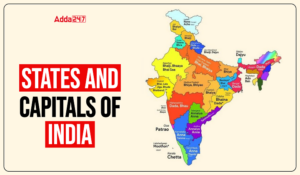What is Salt Satyagraha
Salt Satyagraha is also known as Salt march, Dandi March, or Dandi Satyagraha. It was a nonviolent protest which was led by Mahatma Gandhi in Colonial India. It started on 12th March 1930 and ended on 6th April 1930. It was twenty-four days in March to protest against the British salt monopoly and resistance to taxes for salt. The protest led by Mahatma Gandhi aimed to make salt tax-free in India. As the March started it only had 80 people, but as it grew stronger with 50,000 protestors, it became a historical protest in the Indian History and a huge step in the freedom struggle of India. Salt Satyagraha is one of the major non-violent protests in India.
Salt-Satyagraha: Background
- The Congress, in 1930 declared that the sole aim of the freedom struggle is complete independence or Poorna Swarajya. It meant, that the major goal of India’s freedom struggle will be no interference and dependency on the British government.
- On 26th January, it was declared that it will be celebrated as Poorana Swarajya Day. The means to achieve Poorna Swarajya is Civil disobedience.
- Mahatma Gandhi was approached to plan and organize such acts to resist the government. Gandhi chooses to break the salt law first.
- The British government and the then Viceroy, Lord Irwin were not concerned about the breaking of salt law by Indians and they did nothing to stop the salt march.
- Gandhi decided to break the salt law as he knew it will cause a lot of damage to the Government and will be a huge revolution in the freedom struggle.
- Salt is the basic need of every citizen, whether rich or poor. The salt tax affected everyone in the nation.
- Until the salt act of 1882 was passed, Indians made salt from seawater free of cost. The British got the upper hand over the production of salt and they imposed taxes on salt when they got the authority. Nevertheless, they also made it a criminal offense to violate the salt act.
- 8.2% of the British Raj revenue was accounted for from salt tax. Gandhi’s thoughts on this were, If Indians start protesting against this, it will be a huge loss for the British.
Salt Satyagraha: Consequences of Satyagraha
- On 2nd March 1930, Lord Irwin was informed about the Salt March by Gandhi.
- On 12th March 1930, he lead a group of people from Sabarmati Ashram. He decided to walk through the villages of Gujarat.
- The March started with 80 people but as the March went on more than 50,000 people joined Gandhi in the protest.
- When the group of people reached the coastal Village of Dandi on 6th April 1930, Gandhi made salt from seawater breaking the salt act against the government.
- Throughout the protest the people in March were strictly instructed to not get involved in any kind of violence.
- Gandhi addressed the crowd and gave a speech against the government.
Salt-Satyagraha: Results
The twenty-four days long civil disobedience movement led to the Gandhi-Irwin Pact which favored the Indian freedom struggle. In the pact it was decided that civil disobedience would be ended by Indians, the salt will be allowed for domestic use for everyone, the arrested Indians for breaking the salt law were released and Gandhi was allowed to attend the second round table conference.
FAQs on salt Satyagraha
1. What was the Salt-Satyagraha?
Ans. The Salt Satyagraha was a civil disobedience movement led by Mahatma Gandhi. The Satyagraha was against the salt taxes imposed by the British government.
2. Where is the National Salt Satyagraha Memorial situated?
Ans. National Salt Satyagraha Memorial is situated in Dandi, Gujarat. It was inaugurated on 30 January 2019.
3. What was the first Target of Satyagraha?
Ans. The first Target of Satyagraha was the Salt March. Gandhi decided to protest against the British government with the salt march first as it affected India in a lot of ways.
Buy Prime Test Series for all Banking, SSC, Insurance & other exams
Find More Miscellaneous News Here




 States and Capitals - How Many States in...
States and Capitals - How Many States in...
 Hitachi India Appoints N Venu as Its Man...
Hitachi India Appoints N Venu as Its Man...
 India’s Mahendra Gurjar Sets World Recor...
India’s Mahendra Gurjar Sets World Recor...

